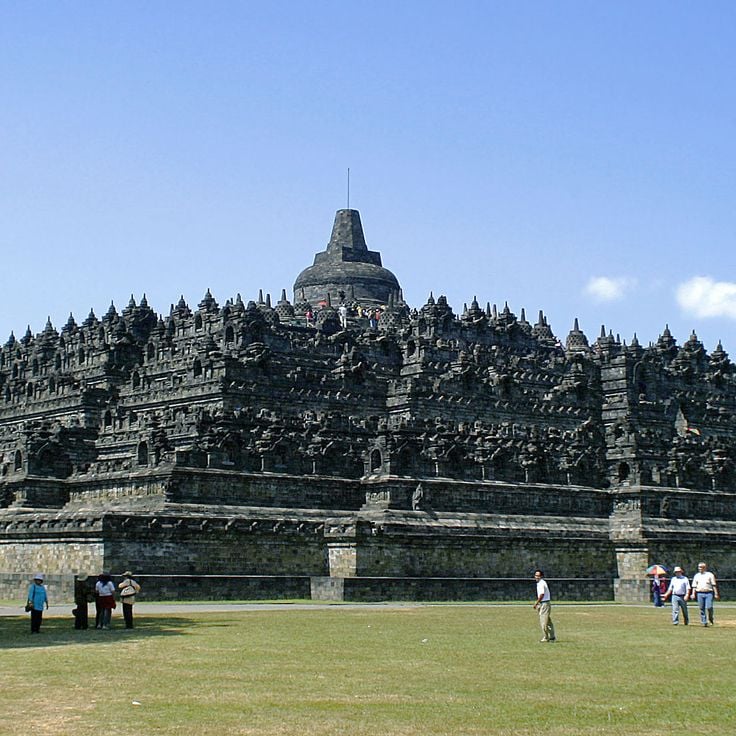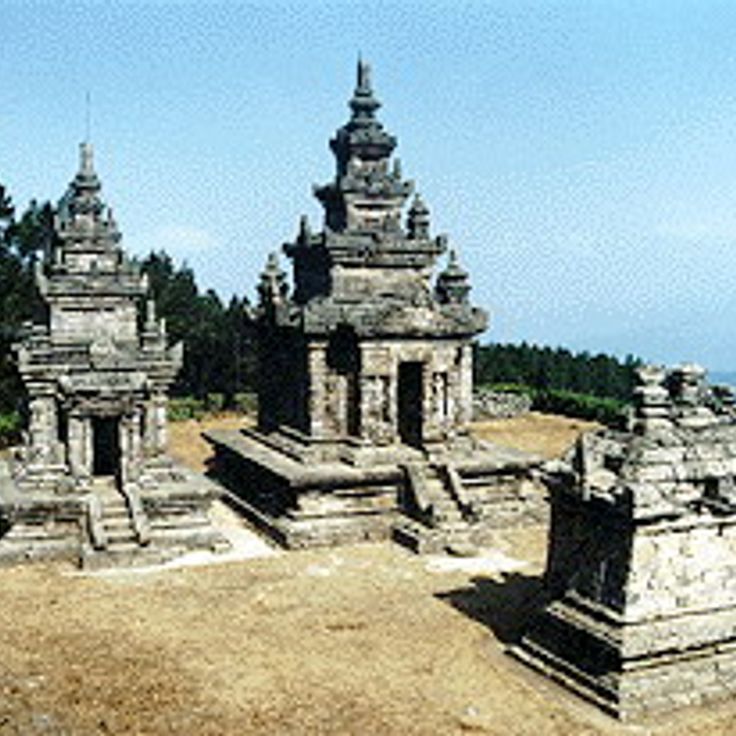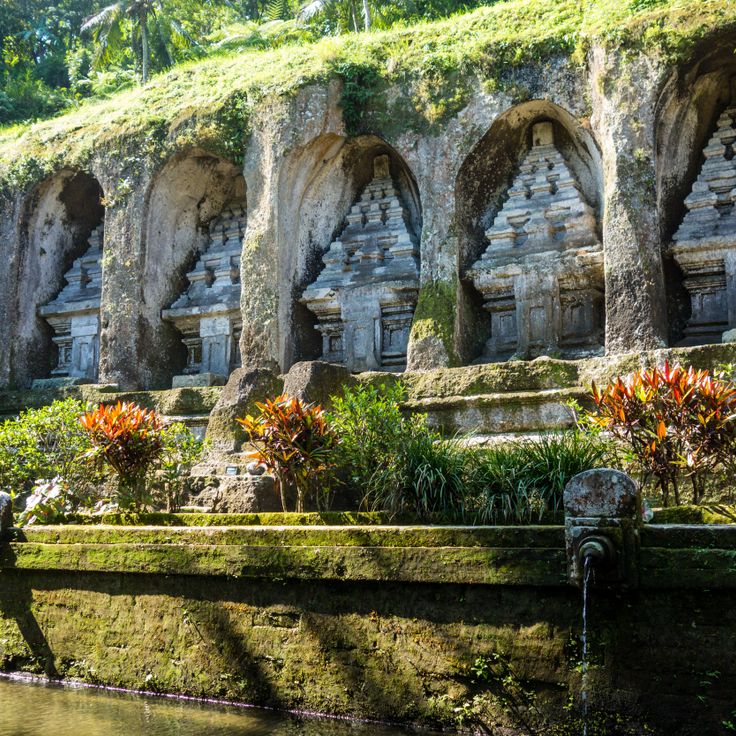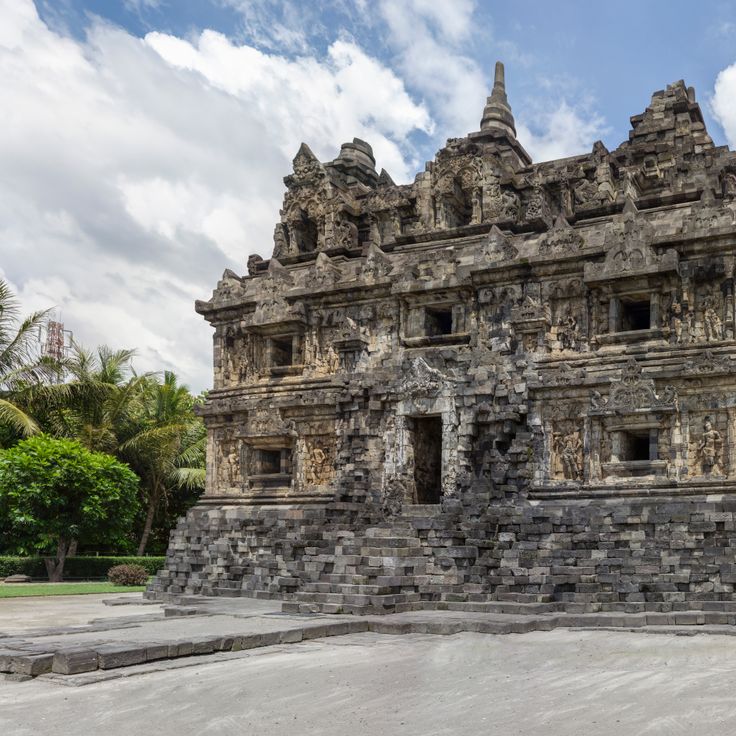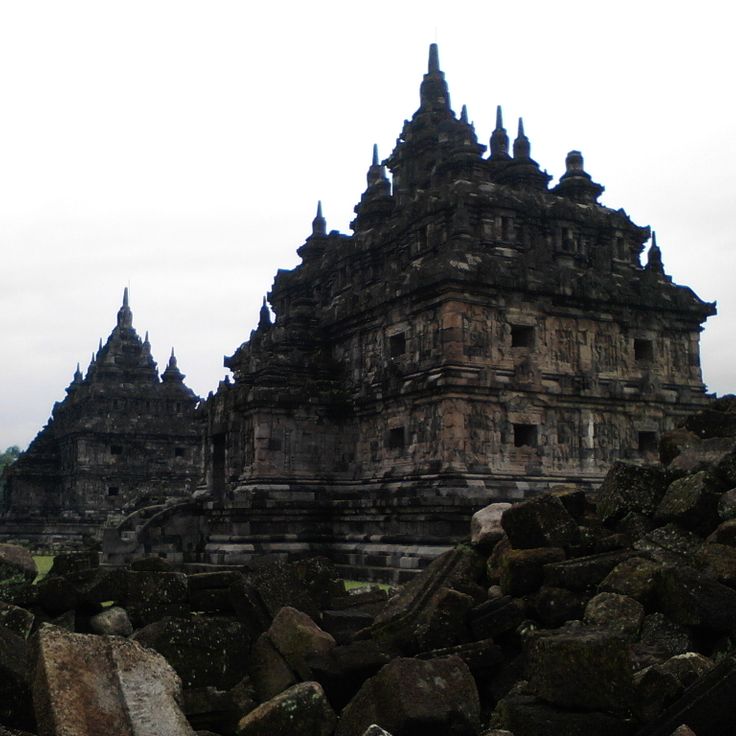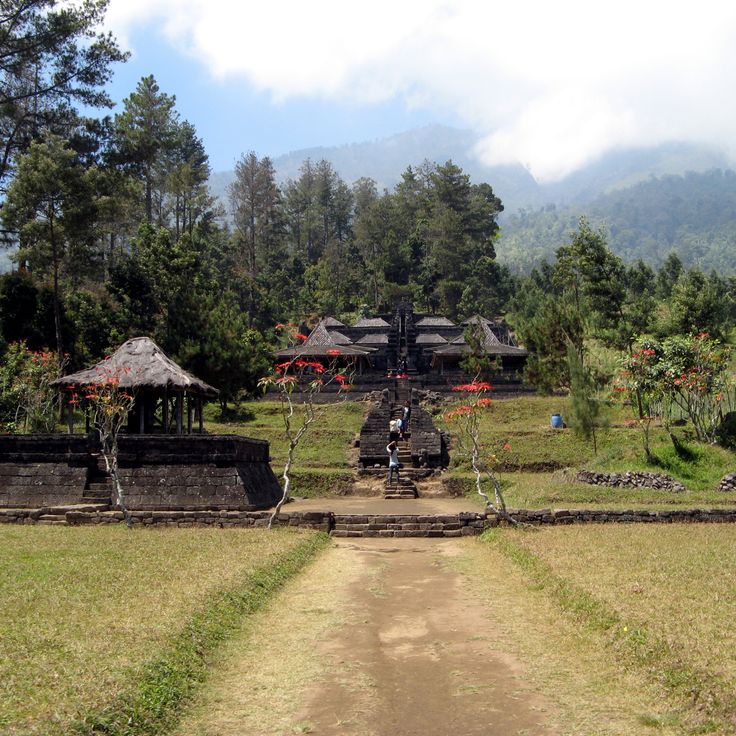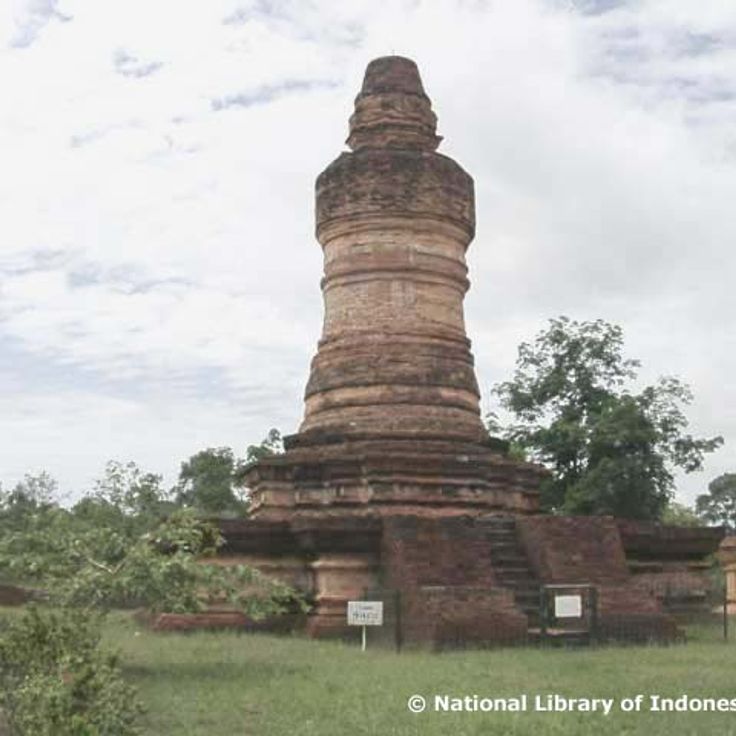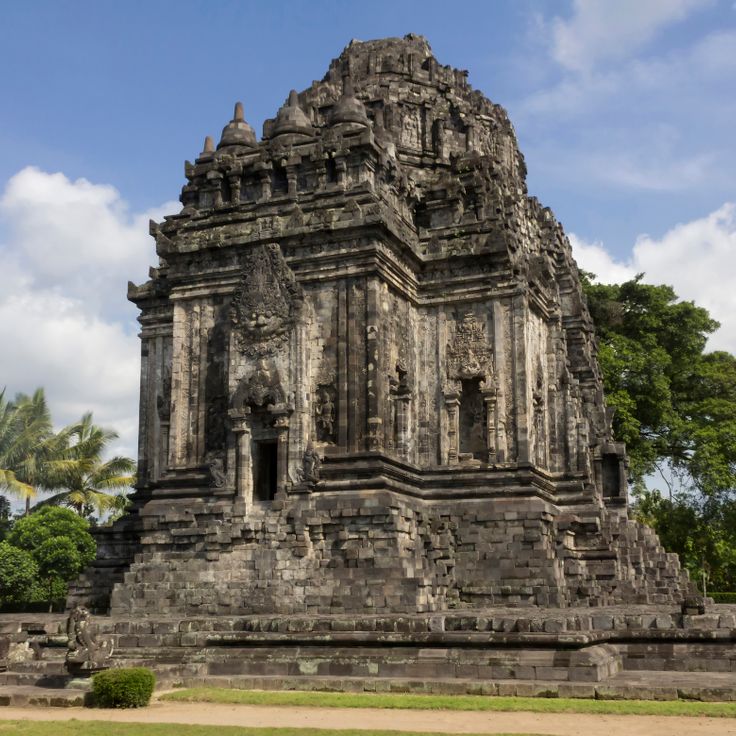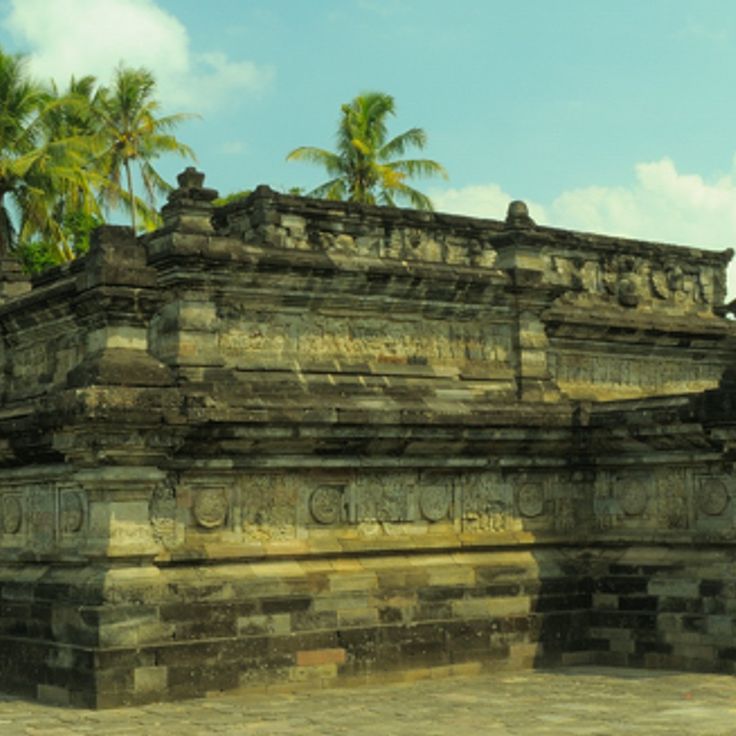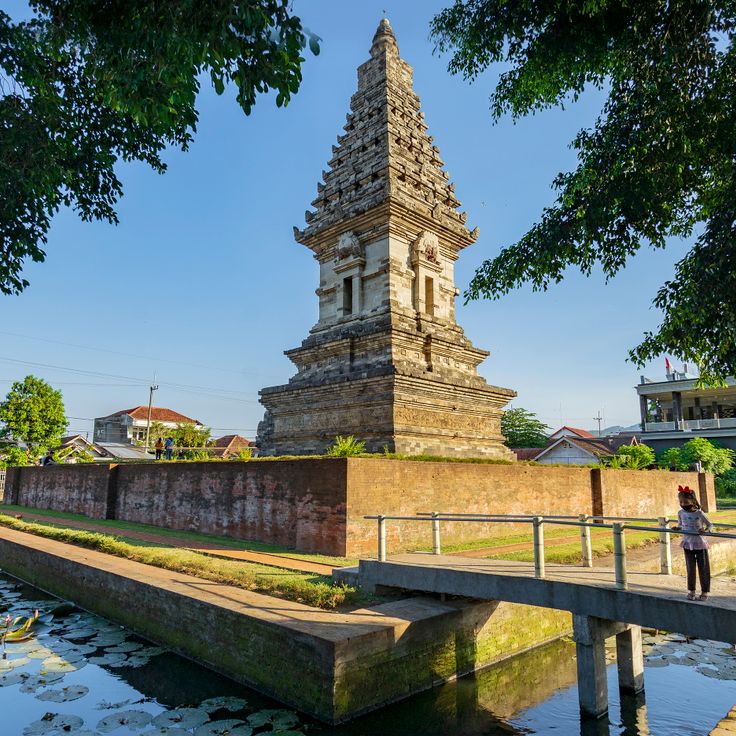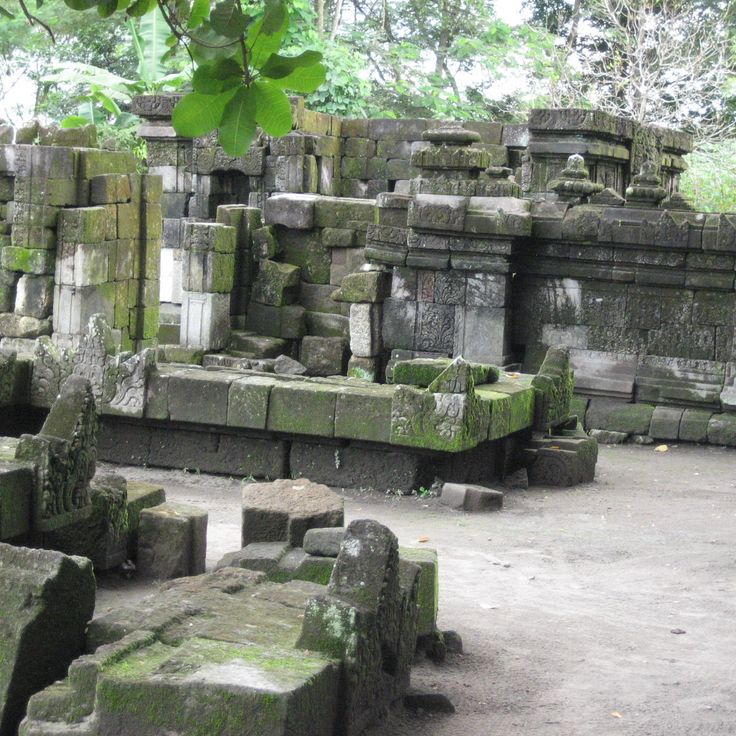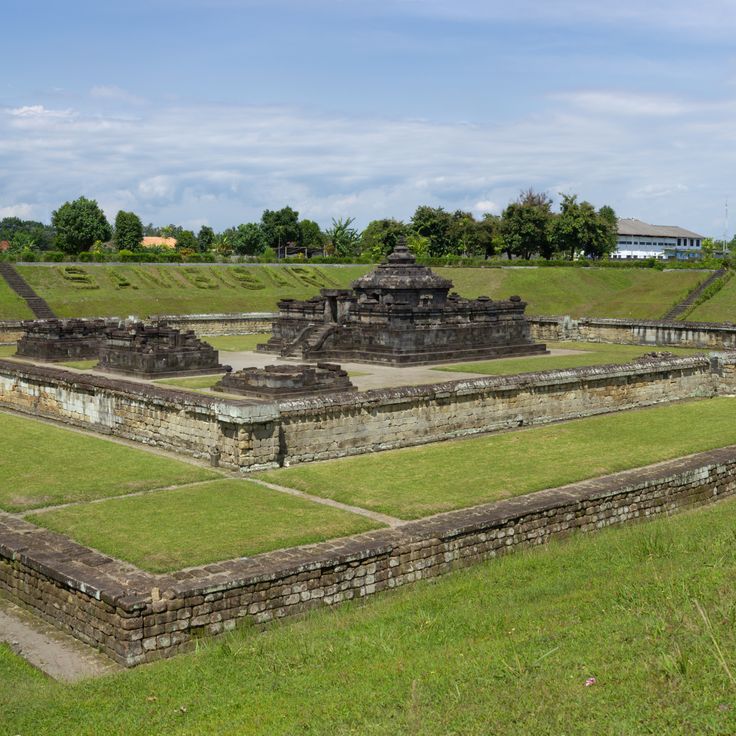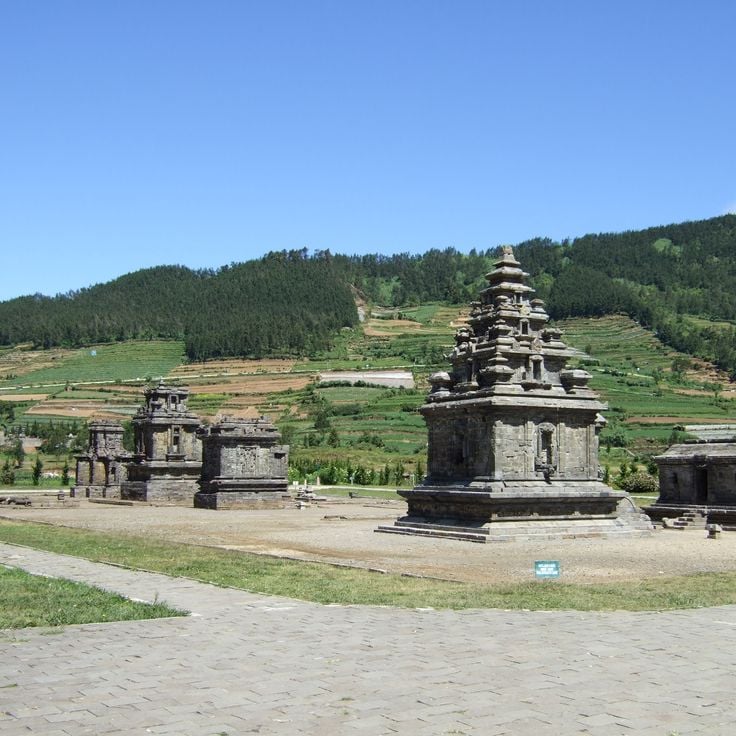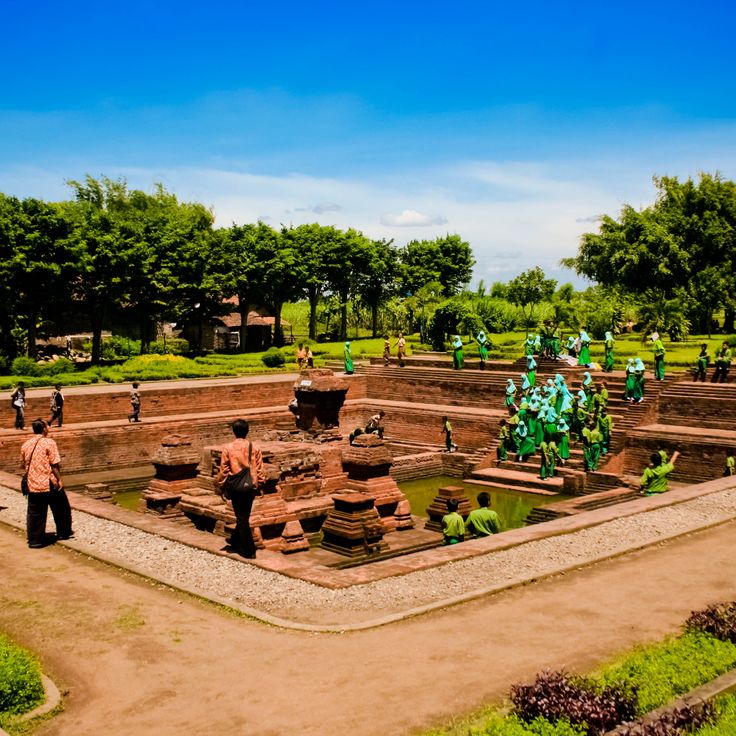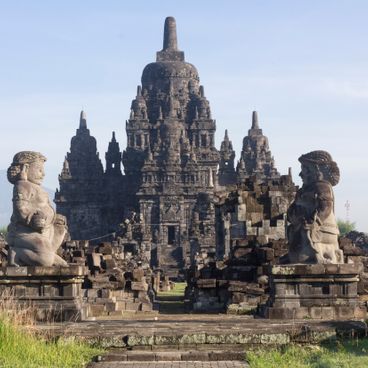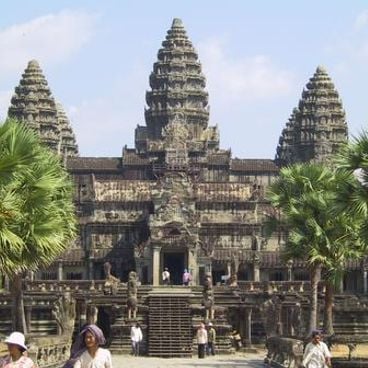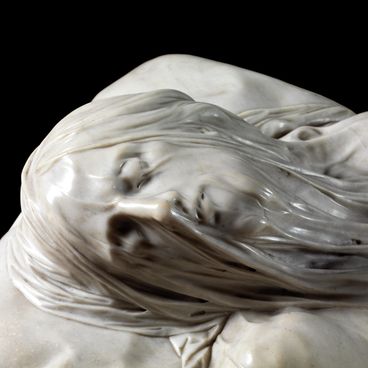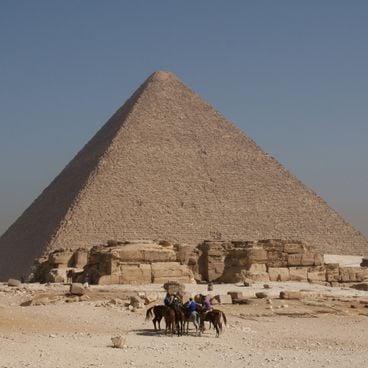The Indonesian temples from the 8th to 14th centuries display Buddhist and Hindu architecture of the Mataram and Singhasari kingdoms. The stone structures carry reliefs, sculptures, and religious symbols depicting deities such as Shiva, Buddha, and Vishnu. The complexes are located mainly on Java and Bali, where rice fields and volcanoes shape the landscape. Borobudur near Magelang forms the largest Buddhist temple in the region with nine levels and 2,672 relief panels. Prambanan in Klaten rises with 157-foot (47-meter) towers as Java's most important Hindu sanctuary. The Gedong Songo temples near Semarang stand at 3,900 feet (1,200 meters) elevation between sulfur vents and volcanic cones. Gunung Kawi near Tampaksiring on Bali shows 33-foot (10-meter) rock-cut shrines from the 11th century. Sukuh and Ceto on the slopes of Lawu present unusual pyramid forms. Plaosan, Kalasan, and Sari near Yogyakarta combine Buddhist and Hindu elements. The Dieng temples document early Hindu architecture of the 8th century as the oldest surviving structures on Java.
This 8th-century Buddhist temple represents a major achievement of Javanese temple construction under the Mataram dynasty and belongs among the large temples in this collection of Indonesian sanctuaries. The nine terraces form a pyramidal structure with 2,672 relief panels and 504 Buddha statues. The reliefs depict scenes from Buddhist texts and daily life from the period of construction. The structure combines elements of Mahayana tradition with local architecture and documents the religious development in Central Java during this period.
This Hindu temple complex from the 9th century shows the religious architecture of the Mataram Kingdom on Java. Prambanan consists of 240 temples, with the central temple dedicated to Shiva rising 47 meters (154 feet) high. The stone structures feature carved reliefs depicting scenes from the Ramayana epic. The temple is arranged with three main shrines for Shiva, Vishnu, and Brahma, surrounded by smaller structures. The site reflects Hindu culture in Central Java during the Mataram dynasty.
Candi Gedong Songo belongs to a collection of Indonesian temples from the 8th to 14th centuries that displays Hindu and Buddhist architecture of the Mataram and Singhasari kingdoms. This temple complex sits on the slopes of Mount Ungaran at an elevation of 3,900 feet (1,200 meters) and consists of nine stone sanctuaries built during the 8th century. Connected by paths through volcanic terrain, the nine temples feature reliefs and sculptures devoted to the god Shiva and represent an early phase of Mataram architecture. These structures were built long before Borobudur and Prambanan and stand as some of the oldest temple remains on Java, with hot springs nearby marking the region's geothermal character.
Gunung Kawi is an 11th-century temple complex on Bali with ten funerary monuments carved into rock niches. Each monument stands about 7 meters tall and was built during the reign of King Anak Wungsu of the Udayana Kingdom. The structures display typical Balinese architectural features with multi-tiered towers and are carved from volcanic stone. Located in a forested ravine near the Pakerisan River, the complex is accessed by stone staircases. Gunung Kawi documents the Hindu burial traditions of this period and represents an important record of Balinese religious practices.
Candi Sukuh is a 15th-century Hindu temple with a pyramidal stone structure that stands apart from other Indonesian temples in the collection. The reliefs carved into its walls show scenes from Javanese mythology and Hindu traditions. This temple marks a shift from the architectural methods of the Mataram and Singhasari kingdoms, using forms and symbolic representations that developed later in Java's religious history.
This eighth-century Buddhist temple in Yogyakarta shows the religious architecture of the Mataram dynasty. The structure has two floors with niches and stone sculptures depicting Buddhist figures. The preserved reliefs and stonework document how temples were built during this period on Java.
Candi Plaosan is a ninth-century temple complex with two main temples and 174 smaller shrines that combine Buddhist and Hindu elements of Javanese architecture. The stone structures display reliefs and sculptures from the Mataram period. This site represents the flourishing era of Indonesian temple construction between the 8th and 14th centuries, when both Buddhist and Hindu traditions shaped the sacred spaces across Java.
This 15th-century temple stands at an elevation of 1400 meters on Mount Lawu and consists of seven ascending terraces. The complex documents the late phase of Hindu architecture in Java as Islamic expansion spread across the island. The structure differs from earlier Javanese temples through its pyramidal form and use of natural stone blocks. The terraces are connected by staircases and contain religious sculptures along with reliefs depicting figures from the Hindu pantheon.
This 11th-century Buddhist temple complex in Sumatra shows how Buddhism was expressed through architecture in Indonesia during the Mataram period. Muara Takus is part of this collection of temples built from the 8th to 14th centuries, which display Buddhist and Hindu architecture from the Mataram and Singhasari kingdoms. The central stupa stands 46 feet (14 meters) tall, surrounded by four smaller stupas. Stone reliefs and religious symbols decorate the surfaces. The structures feature tiered platforms and stone masonry typical of Buddhist temple design.
Candi Banyunibo is a ninth-century Buddhist temple that rises among rice paddies and documents the temple architecture of the Mataram dynasty on Java. The exterior walls display elaborate reliefs of religious figures and symbols from the Buddhist tradition. The stone structure was built following the same architectural principles as other Javanese temples from this period, featuring a central chamber and an eastern entrance. This monument stands in the Prambanan region and provides insight into the religious art and building methods of eighth through tenth-century Indonesia.
This Buddhist temple built in 778 shows architectural features of the Sailendra dynasty and belongs to Java's early temple monuments. The stone structure displays geometric patterns and Buddha figures that reflect the building techniques of the 8th century. Candi Kalasan stands among other religious sanctuaries like Borobudur and the Dieng temples that defined the temple architecture of its era.
The Penataran temple was built between the 12th and 14th centuries and documents the Hindu architecture of the Singhasari and Majapahit kingdoms. This temple belongs to the collection of Indonesian temples that display Buddhist and Hindu buildings from the 8th to 14th centuries. Stone reliefs on the walls tell stories from the Ramayana epic and show scenes from Hindu mythology. The temple complex consists of several terraced levels with shrines, gates, and courtyards. The structures show how Javanese temple architecture developed over two centuries and record the religious practices of this period.
Jago Temple displays Hindu architecture from the 14th century and fits within this collection of Indonesian temples that combines Buddhist and Hindu works from the Mataram and Singhasari kingdoms. The temple features multiple levels with stone reliefs depicting scenes from the Mahabharata epic. It belongs to a group of sanctuaries on Java, where rice fields and volcanoes shape the landscape.
The Jawi Temple is part of the collection of Indonesian temples from the 8th to 14th centuries that display Buddhist and Hindu architecture from the Mataram and Singhasari kingdoms. This temple complex combines Hindu and Buddhist elements from the period of the Singhasari Kingdom in the 13th century. The stone structure carries reliefs, sculptures, and religious symbols depicting deities such as Shiva, Buddha, and Vishnu. Located in East Java, the Jawi Temple sits in a landscape shaped by rice fields and volcanoes.
The Kedulan Temple in Yogyakarta belongs to this collection of Indonesian temples from the 8th to 14th centuries, displaying Buddhist and Hindu architecture of the Mataram kingdoms. The excavation site contains temple structures and artifacts from the Mataram Kingdom period in the 9th century, bearing reliefs, sculptures, and religious symbols of deities such as Shiva and Buddha.
Candi Sambisari near Yogyakarta is a temple discovered in 1966 buried under volcanic ash. The structure dates to the Mataram period and displays Buddhist and Hindu architectural elements. Excavation revealed reliefs and sculptures depicting religious symbols and deities. This temple represents the stone construction techniques and artistic traditions of Java's medieval kingdoms, fitting within the broader context of Indonesian temple architecture from the 8th to 14th centuries.
These Hindu temples from the 8th century represent some of the oldest religious structures on Java and document the early development of Mataram architecture. The eight surviving stone structures stand on a volcanic plateau at 6,600 feet (2,000 meters) elevation, surrounded by active fumaroles and hot springs. The temples bear names from Hindu mythology and display reliefs and sculptures that reflect the religious practices of the period. The location in this geothermally active zone with sulfur vents and crater lakes shows how natural phenomena and religious significance were connected in Javanese culture.
This temple from the 13th century displays a stone structure with three terraces and a water basin used for Hindu purification ceremonies. The Tikus Temple documents religious practices during the Singhasari dynasty on Java and contributes to the architectural heritage of Indonesian temples from the 8th to 14th centuries. The rectangular basin was surrounded by stone walls and formed part of a larger complex. Discovered in 1914, the site now lies below street level. The temple demonstrates the importance of water in the region's Hindu rituals and the ways communities integrated sacred spaces into their daily lives.
